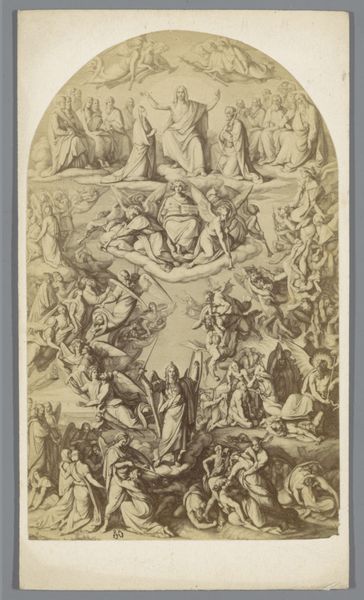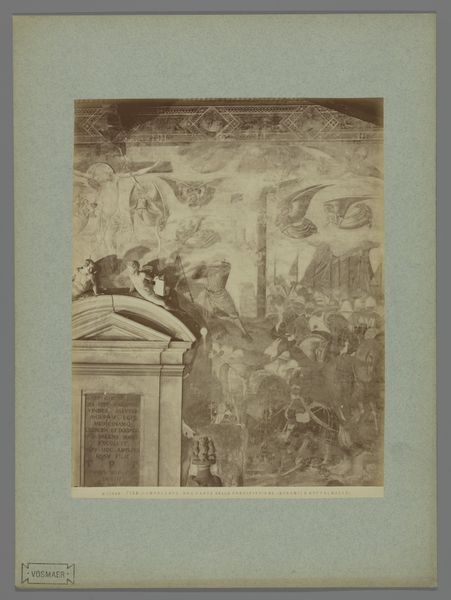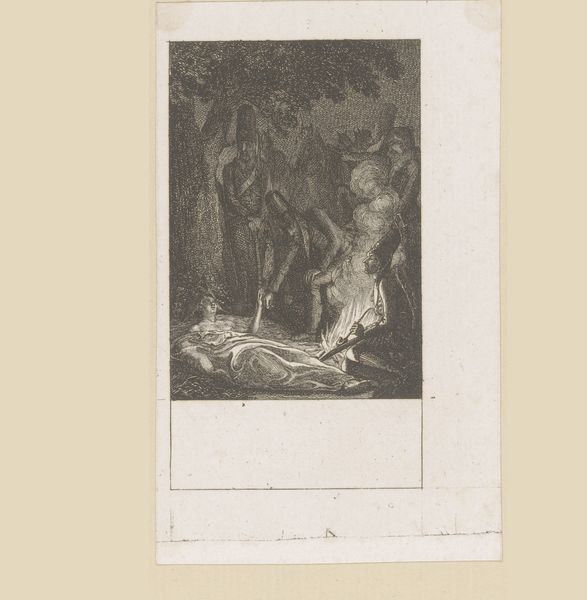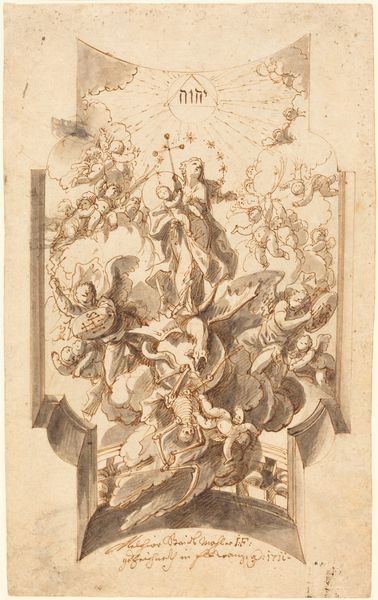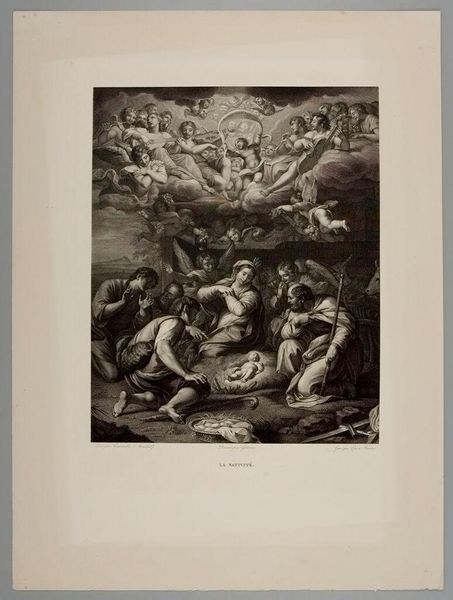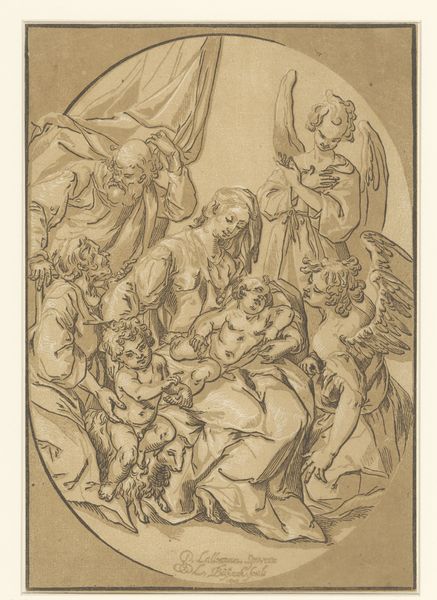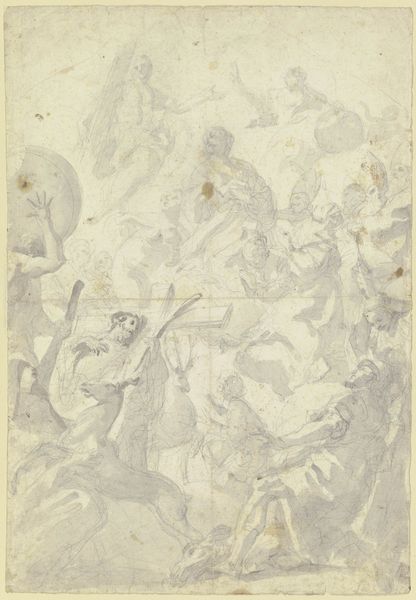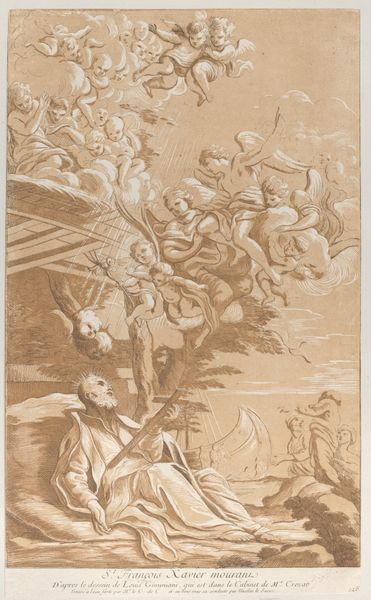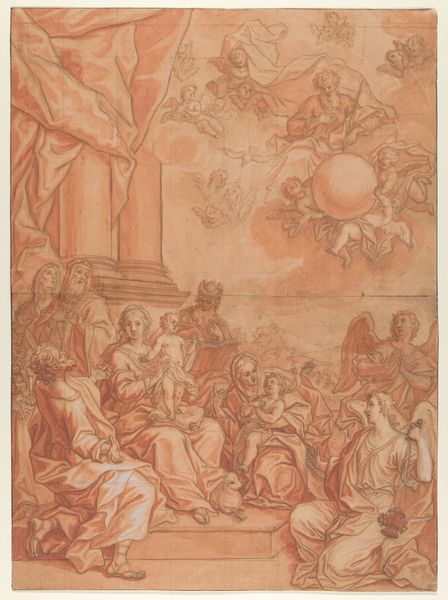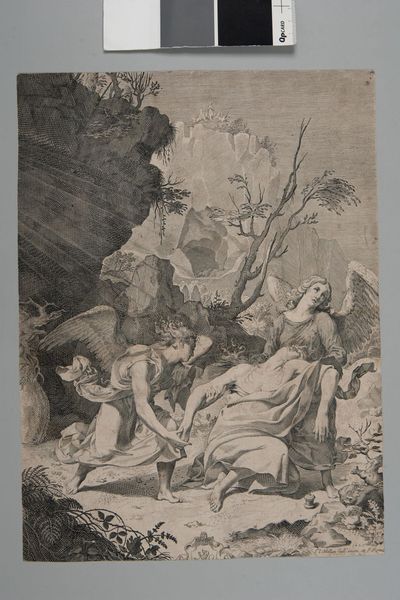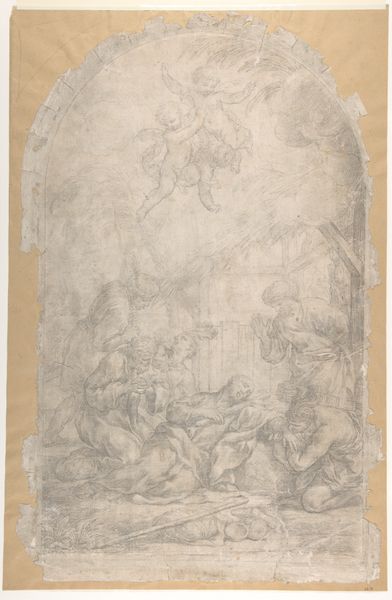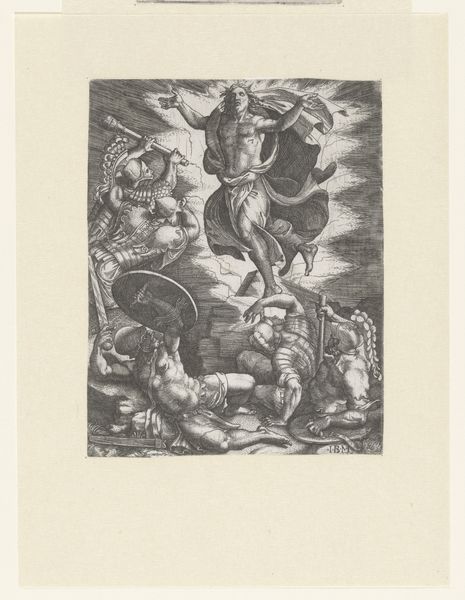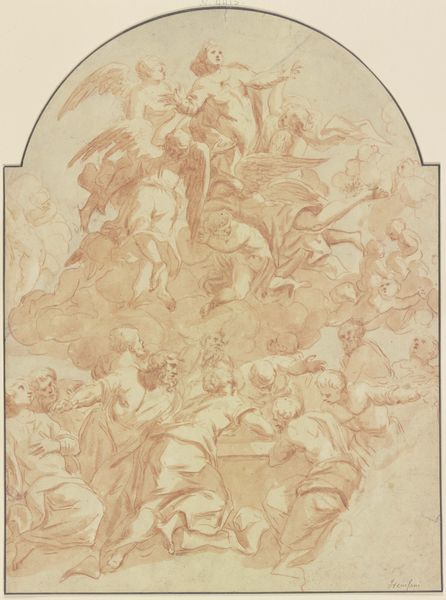
Fotoreproductie van Das jüngste Gericht door Peter Paul Rubens 1855 - 1885
0:00
0:00
Dimensions: height 100 mm, width 62 mm
Copyright: Rijks Museum: Open Domain
Editor: This is a photographic reproduction of Peter Paul Rubens' "The Last Judgement," dating from sometime between 1855 and 1885. The original is grand, and this print seems to capture some of that chaotic energy, that sense of bodies swirling. How do you interpret the meaning and purpose of the painting behind this print, especially in relation to the society that produced it? Curator: This reproduction, of course, loses the dramatic scale and color of Rubens’ original. But even in monochrome, it presents us with the weight of judgment, a hierarchy starkly enforced. Consider the historical context: 17th-century Antwerp, a Catholic stronghold. Rubens visually reinforces a world order. The saved ascend, bathed in light; the damned are dragged down, a writhing mass. But who defines “saved” and “damned?” Who benefits from this visual power dynamic? Editor: It feels… like a warning, doesn’t it? And also, quite male-dominated? Curator: Exactly. Notice the relative passivity of the female figures compared to the active, often agonized, men. Baroque art often uses the female body to represent vulnerability or sin. How does that reinforce patriarchal structures? And isn't this vision of judgment intrinsically tied to controlling behavior, suppressing dissent, especially from those marginalized by the established order? Editor: So, it’s not just a religious painting; it’s a socio-political statement. Curator: Precisely! Rubens wasn’t just illustrating scripture. He was creating a visual argument for a specific power structure. Understanding the artwork, even through a reproduction, demands questioning that power and its legacies in our own time. What stories about justice and fairness are *we* telling through our visual culture today? Editor: That’s a really important thing to consider. Thank you. Curator: It has been my pleasure. Examining this print in relation to Rubens' broader body of work allows for a discussion of societal power, its enforcement, and representation within culture.
Comments
No comments
Be the first to comment and join the conversation on the ultimate creative platform.
